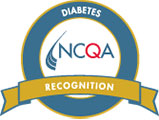To Buy Oseltamivir Online Visit Our Pharmacy ↓
 **understanding Oseltamivir Resistance: Causes and Solutions**
**understanding Oseltamivir Resistance: Causes and Solutions**
Introduction to Oseltamivir and Its Uses
Oseltamivir, commonly known by its trade name Tamiflu, is an antiviral medication that has become a crucial weapon in the fight against influenza viruses. This elixir works by inhibiting the enzyme neuraminidase, which the flu virus uses to spread within the body. Although it doesn't replace vaccines, oseltamivir is often administered as a prescribed script to mitigate flu symptoms and shorten the duration of the illness.
| **Brand Name** | **Oseltamivir** | |----------------|-----------------| | **Uses** | Treat and prevent influenza infections | | **Mechanism** | Inhibits neuraminidase enzyme | | **Effect** | Reduces flu symptoms, shortens illness duration |
Available in various formulations, including capsules and oral suspension, oseltamivir can be a real lifesaver when taken promptly—often as a stat intervention during flu season. Whether purchased over the counter or via a drive-thru at your local pharmacy, understanding its application can make a significant difference in combating flu-related complications.
The Science Behind Oseltamivir Resistance

Oseltamivir, an antiviral medication primarily used to treat influenza, encounters resistance when the virus undergoes specific genetic mutations. These mutations often affect the neuraminidase enzyme, altering its structure to the point where oseltamivir can no longer effectively bind and inhibit its activity. This evolutionary adaptation allows the virus to continue replicating despite the presence of the medication. Resistance can happen stat, making the viral infection harder to treat and leading to higher chances of complication.
Understanding the science behind oseltamivir resistance is crucial for developing better therapeutic strategies. One of the significant mechanisms involves the amino acid substitutions in the neuraminidase protein, leading to a reduced binding affinity. This resistance does not only diminish the effectiveness of the script but also poses a severe threat to public health, especially during influenza pandemics. Therefore, continuous surveillance and innovative research are essential in combatting this growing challenge.
Major Causes of Oseltamivir Resistance
A significant factor contributing to oseltamivir resistance is the regular mutations in the neuraminidase enzyme of the influenza virus. These genetic changes often occur when the virus is exposed to the drug either as a monotherapy or in a suboptimal 'Script. Additionally, over-prescription and misuse of oseltamivir play a critical role. Clinics acting as 'Pill Mills' exacerbate this issue by encouraging non-regulated consumption, further aiding resistance development. Stat measures to ensure proper usage and adherence to prescribed dosages are essential in mitigating this growing challenge.
Clinical Impact of Resistance on Patient Outcomes

Oseltamivir resistance significantly impairs the effectiveness of treatments, leaving patients vulnerable to persistent symptoms and complications. With the anticipated impact on high-risk groups such as the elderly and immunocompromised, timely intervention is crucial. A "Count and Pour" process in pharmacies becomes challenging, as resistant strains necessitate alternative medications that may not be readily available. Consequently, patients might face delays, requiring 'STAT' substitutions, thereby prolonging suffering and potentially leading to complications.
Clinicians observe that resistance diminishes the efficacy of standard treatment regimens. This compels the healthcare system to opt for more aggressive or compounded 'Cocktails' of antiviral treatments, increasing the likelihood of adverse side effects. Morbidity and mortality rates can rise as resistance undermines the efficacy of an antiviral ‘script,' necessitating the search for more potent solutions. This scenario exacerbates hospital workloads, extending 'Refill Too Soon' instances and imposing significant strain on healthcare resources and patient well-being.
Current Strategies to Combat Resistance
Oseltamivir resistance is a growing concern, and addressing it requires a multifaceted approach. One strategy involves the development and use of combination therapies, where oseltamivir is paired with other antivirals to enhance efficacy and reduce the likelihood of resistance. These "cocktail" treatments are designed to attack the virus from multiple angles, making it harder for resistance to develop.
Another key strategy is the meticulous "Count and Pour" process in pharmacies to ensure accurate dosing. By adhering to proper "Sig" on prescriptions, healthcare providers can avoid under-dosing or over-dosing, which are common contributors to resistance.
Finally, ongoing research aims to create new antiviral compounds and improve existing ones. Investment in antiviral research can yield next-generation drugs, potentially reducing the reliance on oseltamivir and thus mitigating resistance issues.
| | Strategy | Description | |--------------|----------------------------------------|-----------------------------------------------------| | Combination | Use in combination therapies | Enhances efficacy, reduces resistance risk | | Dosing | Accurate "Count and Pour" process | Adherence to "Sig" to avoid incorrect dosing | | Research | Investment in new antiviral compounds | Innovation to find next-gen drugs and improve current ones |
Future Directions in Antiviral Research and Treatment
The future of antiviral research holds immense promise, with advancing technologies like CRISPR and AI-driven drug design opening new avenues. Researchers are exploring innovative compounds and targeted therapies to outsmart resistant strains, while ‘stat’ responses, akin to emergency protocols, ensure rapid reaction to outbreaks. Simultaneously, focusing on personalized medicine, which tailors ‘elixir’ treatments to individual genetic profiles, represents a significant shift from general to precision care. This holistic approach aims to stay ahead in the fight against viral resistance, enhancing patient outcomes and public health resilience.
Collaboration between global institutions and leveraging regulatory frameworks like the FDA's Fast Track can expedite the development of these groundbreaking treatments. Combining pharm parties of insights from epidemiologists, virologists, and pharmacologists, the field is poised to meet future challenges head-on. Integrating advanced diagnostics for early detection and strategic ‘count and pour’ practices in managing antivirals ensures that we not only develop but also effectively deploy the next generation of antiviral therapies.
![]()








 We are now located at
We are now located at


